The Polaroid Now Plus was released in late August 2021. The company advertised it as “the most creative Polaroid camera ever produced.” This statement was, of course, music to the ears of every polaroid lover out there -and I was no exception. Straight after receiving the e-mail announcing the camera, I placed my order. And after using the camera for over a month, I decided to write this Polaroid Now+ review.
The Polaroid Now+ seems to be the successor of the OneStep+. The latter is no longer available on Polaroid’s website, but you can still buy it in places like Amazon. After realizing that, I became even more curious: I wanted to see if the Now+ was really an upgrade worth the cost.
I used the Polaroid Now Plus a lot and even took it on my vacation. The truth is that there were things I loved and things that could improve. All that said, in this Polaroid Now+ review, you will read my honest opinion about the camera, and you’ll see some of the photos I shot with it. Let’s start.
*Some of the links are affiliate links. If you buy something, I might earn a small commission at no additional cost to you.
Polaroid NOW+ Review: What I love about the camera

There are plenty of things to love about the Polaroid Now+. Indeed, this is one of the most creative instant cameras I have ever used. And here’s why I believe that.
The Polaroid Now+ has manual control
You can’t be creative in photography if you don’t have complete control over your camera. The Polaroid Now+, precisely like its predecessor -the OneStep Plus- offers complete manual control. To achieve that, you must download the Polaroid App on your smartphone. Then, you turn on the Bluetooth, and the camera will connect to your phone. This opens up a new world to explore.
Yes, some people might think that this is not analog photography anymore. However, creating an instant camera full of dials would make the camera costly and -probably- bulky. Instead, the Polaroid App will let you go beyond the camera’s basic controls.
Practically, by connecting the camera to your phone, you can set the aperture and shutter speed. Moreover, you can do fun things like light painting, shooting in Aperture Priority mode, and shooting proper portraits. As you can imagine, this gives you complete control beyond the simple lighten-normal-dark exposure compensation that instant cameras provide.
One big difference with the OneStep+ is that the connection to the app is excellent. In OneStep+, connecting sometimes took ages, and the disconnections happened often. With the Polaroid NOW+, this issue is solved. The moment you turn on the camera and your phone’s Bluetooth, a connection is established. No need to wait or fiddle around with settings.
This is a decisive factor for people interested in having complete manual control. Honestly, it was so tempting that I didn’t even check any other specs. An instant camera that lets me decide on settings (the i-Type film’s ISO is 640) is a camera that I want to have. You can download the Polaroid App for your iPhone here and your Android phone here.
You can shoot double exposures with the Polaroid NOW Plus
The Polaroid Now+ offers one more cool feature: it lets you shoot double exposures. What is double exposure? Well, double exposure is a photography technique that combines two exposures to create a single image. Imagine it like taking two photos, but they are both printed on the same shot.
Moreover, you can shoot them without connecting the camera to the app if you aren’t a digital fan. Then, you just double-press the front “plus” button beneath the viewfinder, and the camera is ready. The number “1” will appear on your counter, which means you’re prepared for your first shot. Then number “2” will appear, and after you shoot the second pic, the photo will eject.
Apparently, the Polaroid App allows you to shoot a double exposure through it. You just choose “Double Exposure” on the menu and follow the same process.
The Polaroid Now+ comes with lens filters
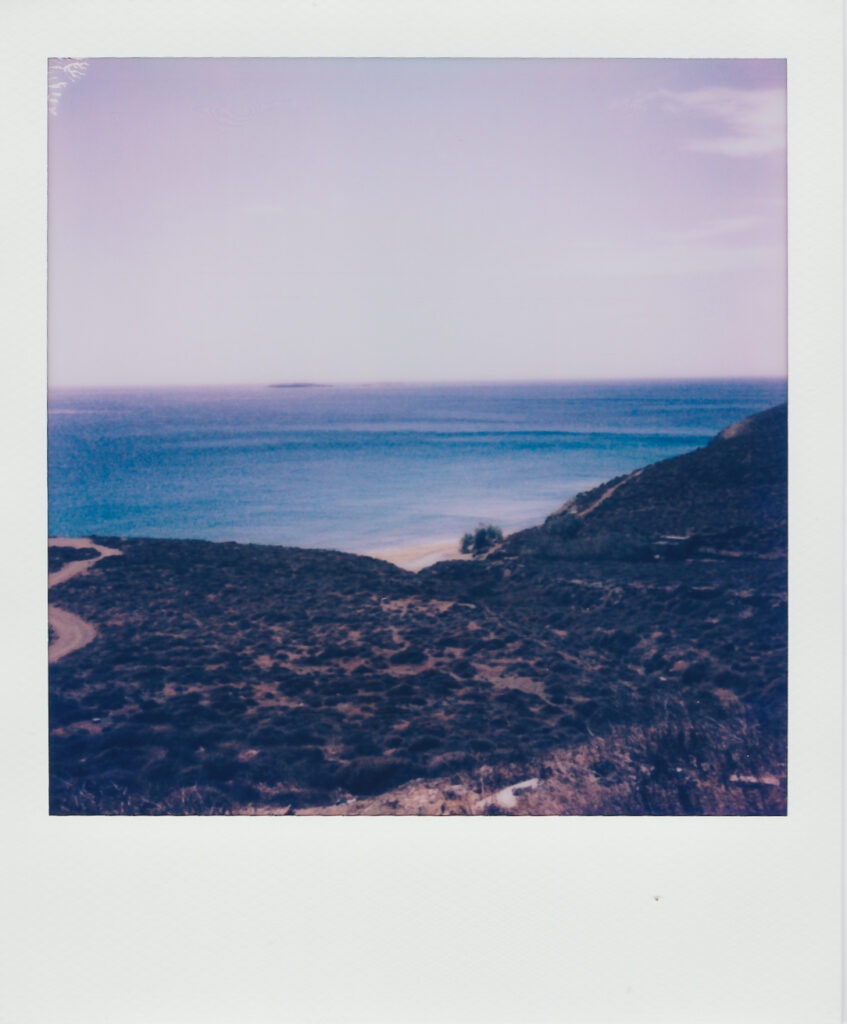
If you wanted extra lens filters for your Polaroid camera, you had to buy them. For example, I have bought lens filters for my OneStep+. I must admit that I’m not a big fan of filters in instant photography, but this is just a matter of taste. Even though I didn’t use them that much, I was still curious to see how the camera could perform.
The Polaroid Now Plus takes a step further: the lens filters are included in the package. Specifically, when you unbox your camera, you’ll see a small pouch including five lens filters (starburst, red vignette, orange, blue, and yellow) plus a lens cap. The latter is one of the most valuable additions because it will prevent your lens from scratching and make carrying the camera around more carefree.
The lens filters are usually expensive for what they offer (the OneStep+ cost me approximately 25 euros), so this is an excellent addition. Moreover, and that’s what I find even more important, Polaroid paid attention to its fanbase’s needs. And in my opinion, a company that cares for the consumer’s needs is always a company to appreciate.
The camera’s size and weight
The Polaroid Now+ won’t probably impress you that much in terms of design, but in instant photography, that’s something I don’t care about that much. What matters to me the most is that the camera is lightweight and easy to transport. And that’s what the Polaroid Now+ is: a camera that you want to have with you.
The camera weighs 457 grams, and due to its size, it will easily fit in your bag. Since I always complain about bulky equipment, carrying the Now+ in my bag was never an issue, and I always looked forward to having it with me.
The NOW Plus has a dual-lens

The previous model, the OneStep+, also came with dual-lens, but the approach was different. You had a small switch on the camera’s top, and from there, you chose a landscape or portrait mode. However, the Polaroid Now Plus took a step forward. While the camera also has two lenses, you don’t have to switch to choose your lens. Instead, all you have to do is half-press the shutter button, and depending on where you focus, the camera picks the lens.
Apart from being an improvement, this will also save you from bad shots. For example, with the OneStep+, I forgot to switch lenses and ended up with out-of-focus shots. Sure, it might sound like I got some creative results, but the truth is that I found it (usually) nerve-breaking. With the NOW+, this issue is solved, and I’m glad to care more about composition and less about the lens.
As for the focal lengths of the two lenses, the Standard Lens is 102.35 mm (40mm/35 equivalent), while the Close-up Lens is 94.96 mm (35mm/35 equivalent).
The price of the Polaroid NOW+
One might expect the cost to be elevated for a camera advertised as the most creative Polaroid camera ever released. However, Polaroid decided to price it moderately. At the time of writing, the camera costs 149,99 euros (check its current price on Polaroid’s official websites: (US | EU |UK). I find the price decent, and one might call it relatively cheap for what you get. Of course, after purchasing it, you must consider the film’s cost, which is always on the steep side.
However, I think the price is very reasonable for an instant camera with complete manual control, dual-lens, a dedicated app, and a lens filter pouch. So, kudos to Polaroid for creating a camera that the audience can afford to buy.
Tripod mount on the base of the camera
Last but not least, there’s one more significant improvement: the tripod mount. You will find it on the camera’s base, which is a big plus if you are somewhere on your own and want to have a photo of yourself. Or if you hang out with friends and want a group photo.
The tripod is -also obviously- not included in the package, but even the cheapest ones you’ll find online will do the job. I used this tripod by Manfrotto and the one from Amazon Basics, which both fit fine. But as I said, every tripod will be okay.
Polaroid NOW+ Review: What I don’t like about the camera
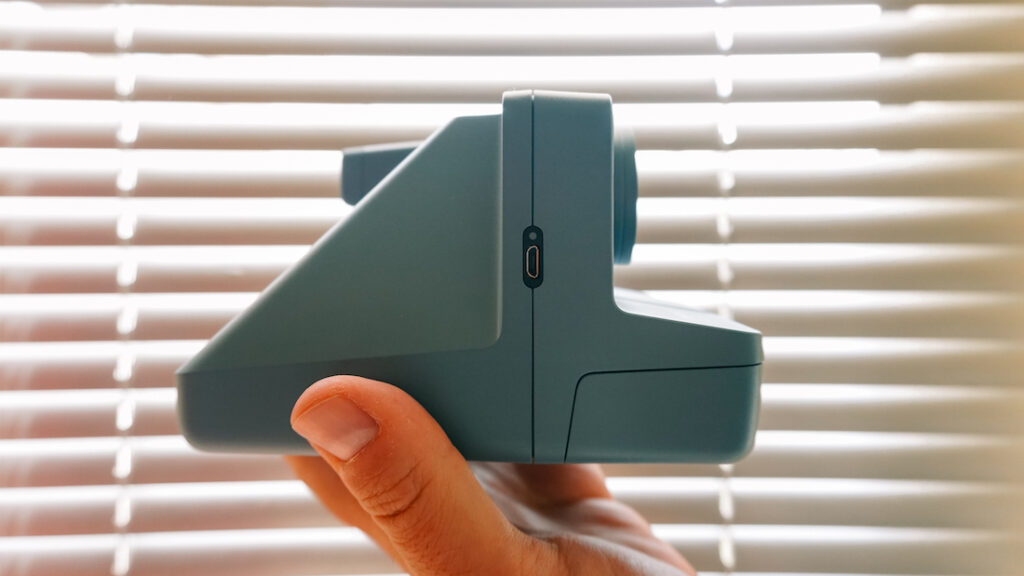
Of course, you will discover things you don’t like whenever you use a device extensively. In the case of the Polaroid NOW Plus, I found a couple of things that bothered me. There are three things that I didn’t enjoy while shooting with the camera. The first two deal with the shooting process, so keep them in mind as analog photography tips before using the camera. As for the third one, well, it’s a usual complaint of mine, and if you read my previous Polaroid camera reviews, you probably know it.
So, let’s see what I didn’t like about the Polaroid NOW+.
The Polaroid Now+ tends to overexpose
Well, this turned out to be my biggest complaint about the camera until I understood how it exactly worked. The Polaroid Now+ tends to overexpose during daylight. And since I’d like you to know what I mean by overexposing, I’ll share three photos below.
The first one is one of my first shots with the camera. It’s taken shortly before noon on a very sunny day on the small Greek island of Anafi. I didn’t use the Polaroid App and kept the exposure balanced. Here’s what I got.

I must admit that I felt puzzled. Therefore, I decided to shoot another. However, I preferred again not to use the Polaroid App, and I decided to underexpose and use the (let’s call it) “darken” mode. And that’s the image I took.
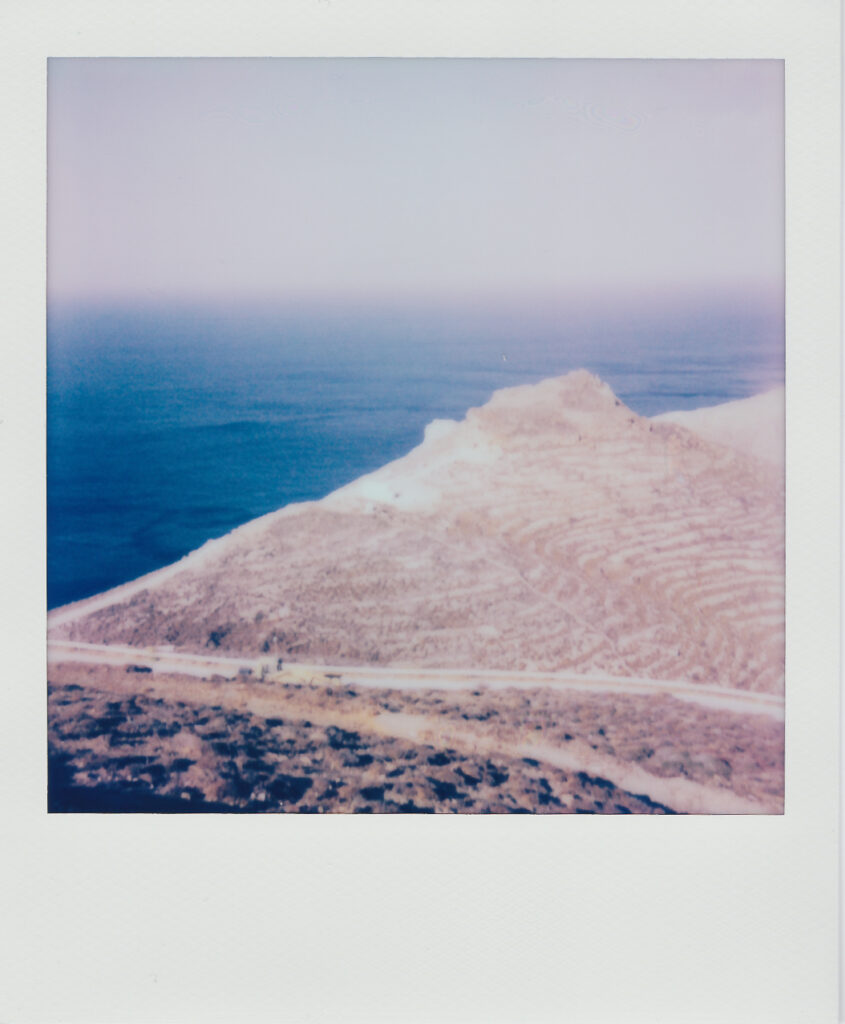
Once again, I wasn’t satisfied with the result. Although I got a bit more detail, the exposure was far from perfect. So then, I decided to use the App and have manual control. This time, I decided to underexpose a lot. I used the maximum Aperture I could get (f/64) and a shutter speed that gave me a -2 in the exposure. Under normal circumstances, this should cause a very underexposed image. And although it’s indeed slightly underexposed, I could at least get enough detail and colors. Here’s the picture.

So, long story short, you should always underexpose if you shoot in direct sunlight with the Polaroid Now+. While polaroid cameras need light, this one can also live without loads of it. If you go full manual, consider underexposing by at least -1,5 when you shoot. Keeping the balance in the middle will most likely give you an overexposed image.
The flash is always on -remember to turn it off before each shot.
For people that want just the point-and-shoot carefree experience, a flash being always ON can ruin some photos. Now, add on top the fact that the Polaroid NOW+ tends to overexpose, and you see the problem. If you forget your flash on and shoot during harsh daylight, you might end up with a…plain white polaroid photo. And you don’t want that.
That said, always switch the flash OFF if you shoot during the daytime and there’s adequate light around you. This will save you from badly overexposed images. On the other hand, if you prefer shooting indoors, a flash that is always on sounds like a plus. From my side, I would choose to have the flash always off and turn it on only whenever I needed it. However, Polaroid prefers to have it always on (the same is with the Polaroid GO).
So, don’t forget to turn off the flash whenever you are out and about. And you must do it before shooting a photo, i.e., the camera won’t remember the setting if you shoot two pictures in a row.
The price of the i-Type film
The Polaroid Now Plus uses the i-Type film (it can also use the 600 film, which is the same, but it also has batteries). Unfortunately, the film’s price is not low (see here: (US | EU |UK), and that’s a problem if you want to shoot loads of photos. Moreover, the quality varies from batch to batch, so the results might look inconsistent. I know that the guys at Polaroid keep developing the film, but still, I’d like to see more vivid colors like in older polaroid films.
Moreover, since the film is pricey, I’d love to see its price slightly reduced, or the cartridge will contain again 10 photos and not 8. However, I realize this is a bit tough because the new film is different from the old ones and we can’t always have what we want. So, I just hope we’ll get more vivid colors and a slightly cheaper film so we can all shoot more polaroids in the future.
PROS & CONS of the Polaroid NOW+
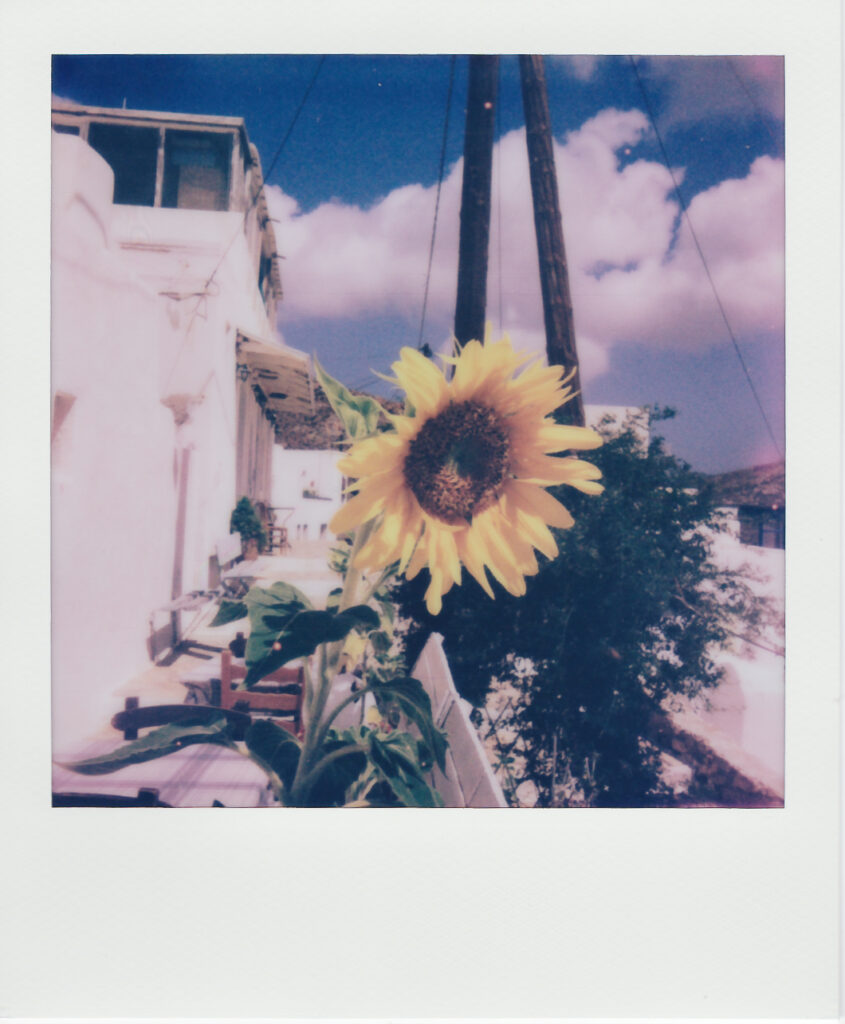
So, before I proceed with the rest sections of this Polaroid Now+ review, let’s recap the pros and cons of the camera quickly.
Polaroid NOW+ Review pros & cons
Pros
- The Polaroid Now Plus offers complete manual control via the App.
- You can shoot excellent double exposures.
- The dual-lens performs really well.
- You get lens filters for free, and you can use them creatively.
- The camera is not bulky, and you can easily carry it around.
- The Now Plus is reasonably priced.
- A tripod mount on the camera’s base is great for self-portraits.
Cons
- It’s a fact: the Polaroid Now+ tends to overexpose.
- The flash is always ON.
- The price and quality of the film can be improved.
For whom the Polaroid NOW+ is
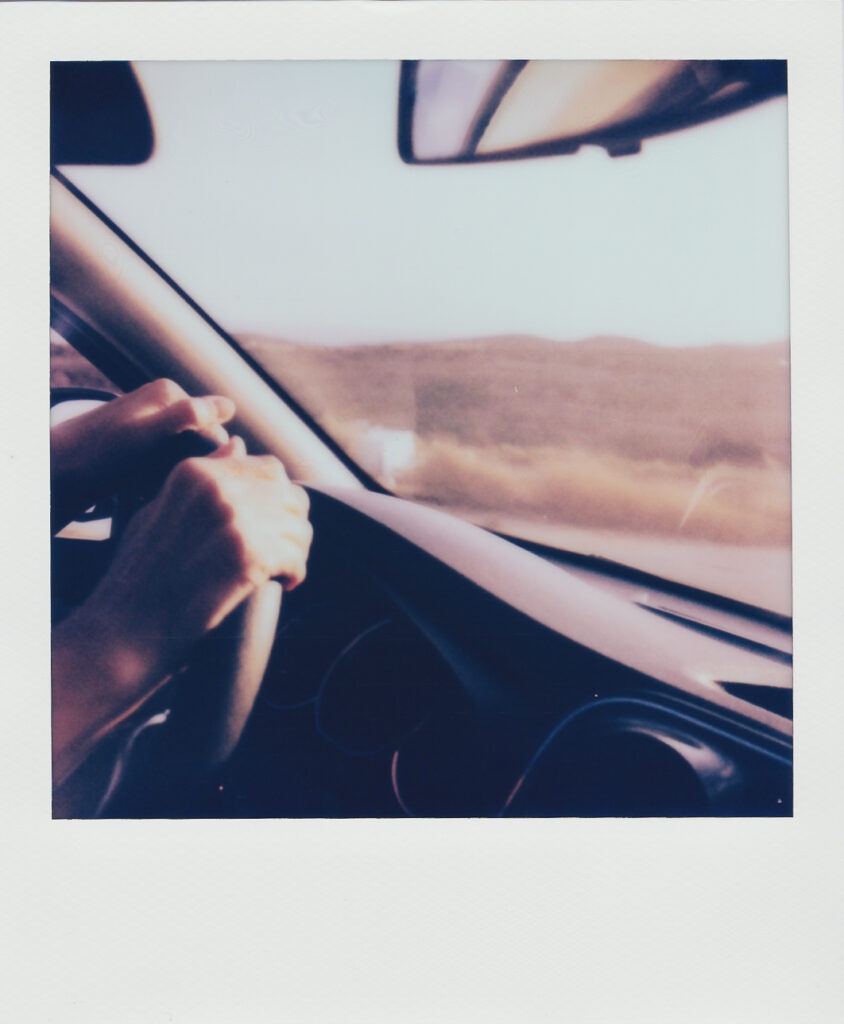
If you made it that far to this Polaroid Now+ review, you probably wonder if this is the right camera for you. So, in this short section, I will write down for whom I think the Polaroid NOW Plus is suitable.
My opinion is almost identical to the one I had after using the OneStep+. After all, the NOW+ is the successor of this camera, which seems suitable for specific groups of people.
First, I’d say that the NOW+ is an ideal camera if you are a newbie in the Polaroid world. If this is your first instant camera, you can’t go wrong with it. However, this is an excellent camera even if you don’t want to use the Polaroid App and just need a camera for the occasional analog snapshots of daily life.
You see, the camera is pretty simple to use: set the exposure, decide if you want the flash or not, and half-press the shutter button to focus and shoot. And just like that, you will have loads of polaroid memories. Below, I will share some polaroid photography tips that will help you get better results. But in general, it’s an easy-going camera and probably the best one to buy as a beginner.
Since the camera offers complete manual control, this is also an excellent camera for advanced photographers. If you know what aperture and shutter speed mean and how to handle them correctly, the Now+ will open up a new polaroid world. The camera will give you creative freedom, and if you’d like to experiment further, there are five lens filters to play around with. Things like double exposure and light painting also offer a great field of experimentation. So, as an advanced photographer, you will have the opportunity to make the most out of this instant camera and let your creativity flow.
On the other hand, this is not a camera for kids. If you’d like to offer it to a kid, you’d better check the GO camera. By no means is the GO a toy camera. However, it’s much easier to use, and due to its tiny shape, kids will love it.
Last but not least, if you are a pro photographer and want the sharpest results and the best polaroid lens, you’d better check the SX-70. Yes, it costs much more, and it’s a 50-year-old camera, but the SX-70 is a state-of-the-art Polaroid. If you’re not ready to splurge, the NOW+ is a good option.
You can see the current Polaroid NOW Plus offers on Polaroid’s official websites: US | EU |UK.
Polaroid NOW+ review: Accessories

At the time of writing, there aren’t many accessories available for the NOW+. However, if Polaroid releases some new products for the camera, I’ll make sure to add them.
The Polaroid NOW+ comes in three colors: Black, White, and Blue Gray -I got the latter, as you can see in the photos. Apart from buying the i-Type film, you can also purchase a travel bag. It will fit your camera and a couple of films.
Polaroid NOW+ photography tips

I always add a section with Polaroid photography tips. Most of them are standard for every instant analog camera, but I try to add some new ones as time goes by. Quite often, polaroid cameras have a mind of their own. So here you’ll see how I shoot photos with the Now+.
- Polaroid Now+ tends to overexpose. I wrote this one as one of the camera’s odd issues. Make sure to underexpose your images when you shoot in direct sunlight.
- Turn off the flash. Interconnected with the last polaroid tip, you should turn off your flash if you shoot during the daytime. Unless you’re trying to achieve a creative result, make sure you don’t use your flash when shooting outdoors.
- Polaroid cameras are made for portraits. The sharpest results you’ll get with the Polaroid NOW Plus will be when shooting portraits. Start with your family and friends and shoot several images. I think it’s the easiest way to learn your camera and have some beautiful pictures from the beginning.
- Don’t forget to clean your camera rollers often. Polaroid says you should do it after every film pack, but I usually do it after two or three packs. If you can manage to do it every time you finish a roll, it’s optimal. See how to do it in this video.
- Don’t shake your polaroids. No, they won’t develop better. The chemicals are sensitive, and you might get a lower-quality photo if you shake them. Instead, just put them in a dark place (a pocket is also fine) and let them develop. The i-Type film needs approximately fifteen minutes to develop.
- Scan your polaroid photos. If you do, you’ll have some images to share on Social Media, but you will also have a digital archive. You can also print scanned polaroids in case you need to. Please don’t believe the hype: you don’t need a professional scanner to do it; you can scan polaroids in every flatbed scanner. Use high resolution and scan them as TIFF.
- Last but not least, store your polaroid photos in closed boxes. This will guarantee that the polaroids won’t fade away and that you’ll let them develop further. Sometimes polaroids need up to 30 days to fully develop. By storing them in safe and dark places, you maximize their life.
Do you want to see more? Subscribe below -and then move to the last section of this Polaroid Now+ review.
Polaroid NOW+ Review: The Verdict
The Polaroid Now+ is here to stay. The camera looks good, and you will get beautiful results if you understand how its exposure works. After using the OneStep+ extensively, I can assure you that the Now Plus is a step forward. The more effortless connectivity, dual-lens, and complete manual control are great tools if you want creative freedom in instant photography. Plus, the brand offers lens filters for free, giving you even more opportunities for experimentation.
I took the camera with me on vacation, and I don’t regret it. In fact, I loved having it with me as a travel camera. As you can see in the photos, I tested it under the intense sunlight of the Greek islands and got some great results. Of course, as it’s the case with every new device, it’ll take some time to master it. But when you understand everything, you’ll start getting fantastic instant memories. And that’s what matters the most in instant photography.
More Polaroid Reviews: My SX-70 review, My Polaroid OneStep+ Review, My Impulse AF review, My Polaroid GO Review
My Polaroids: The full Polaroid Diaries, My SX-70 polaroids
Pin it for later

Sharing is caring: If you enjoyed reading this Polaroid Now Plus Review, please share it with your friends.
Last Updated on March 25, 2023 by George Pavlopoulos



Recently I got the Now+. It was an unnecessary purchase since I have the OneStep plus and others like SX-70, SLR680, but the tripod mode spoke to me and the results indoors are quit good when exposure is set to darken. Flash pictures are okay keeping in mind the flash range. From 2 outdoor pictures on an overcast day 1 was exposed acceptable (no flash, no compensation). The second was blurry and overexposed (no flash, no compensation). I’ll do some more testing this weekend, it should be sunny weather. Was thinking of making a DIY ND2 filter that would not cover the filter sensor. Anyhow I must perform some outdoor tests in bright sunlight. I would like to love this camera but I’m aware it can’t replace a Polaroid SLR680 with its glass lens.
Hey dear Jos,
Thanks for your comment. In general, I think that no polaroid camera can compare to the SX-70 or the SLR680. I’ll upload a post soon with my SX-70 photos from the same place, under the same conditions. There’s a big difference.
Apart from the glass lens, I believe that the i-type film still needs work. It’s often inconsistent with the results, and I’m not too fond of the green or pink tint you usually get. Moreover, the thing with the Polaroid Now+ is that it tends to overexpose. The tripod socket was a decisive factor for me as well.
I want to use it for a couple of months to see what I can make out of the camera. But if somebody (like you and me) has the OneStep+ and mainly shoots in auto mode, there’s probably no reason to upgrade. The only real upgrade is -in my opinion- that it’s much easier to connect to the app. Sure, the lens filters are a nice addition, but I’m not the biggest fan of filters anyway. Creating an ND filter sounds like a good idea and definitely a nice addition to the lens filters. In fact, it might be an idea for Polaroid as well.
Enjoy pola-shooting, Jos -and let me know if you’re happy after testing it further 🙂
George
I have a question. Is it possible to shoot double exposure in Manual mode?
Hello Maria,
Thanks for reaching out. As far as I know, it is only possible to shoot double exposure using the self-timer button, which sets the Polaroid Now+ in double exposure mode.
There used to be a workaround for shooting double exposures for older polaroid cameras, but this required putting your film at risk. Practically, you had to modify your film pack. I don’t know if this works with Polaroid Now Plus. If it’s a risk you’d like to take, you can watch a video here. If you try it, please let me know if it worked for you.
Best regards,
George
Thank you so much for this very informative post. If given the choice between the OneStep+ versus the Now+, which would you pick? I am very concerned about the tendency for overexposure. Quality of the image is very important. Is this aspect something that the OneStep+ excels in comparison to the Now+? I’m having a hard time deciding which camera to purchase. Thank you.
Hey Paul,
Thanks for reaching out. That’s a great question, actually. I think I was happier with the OneStep+ than with the Now+. If you are only concerned about overexposure, I’d say go for the OneStep+. However, please keep in mind that the OneStep+ is a discontinued model.
On the other hand, the Now+ seems to offer many experimentation opportunities and a “richer” manual control experience. It’s a tough call, but as I mentioned, the OneStep+ produced some great polaroids for me. You can look at my Polaroid Diaries with the OneStep+ to get an impression (like this from Berlin or this one from Athens).
I hope I helped a bit,
George